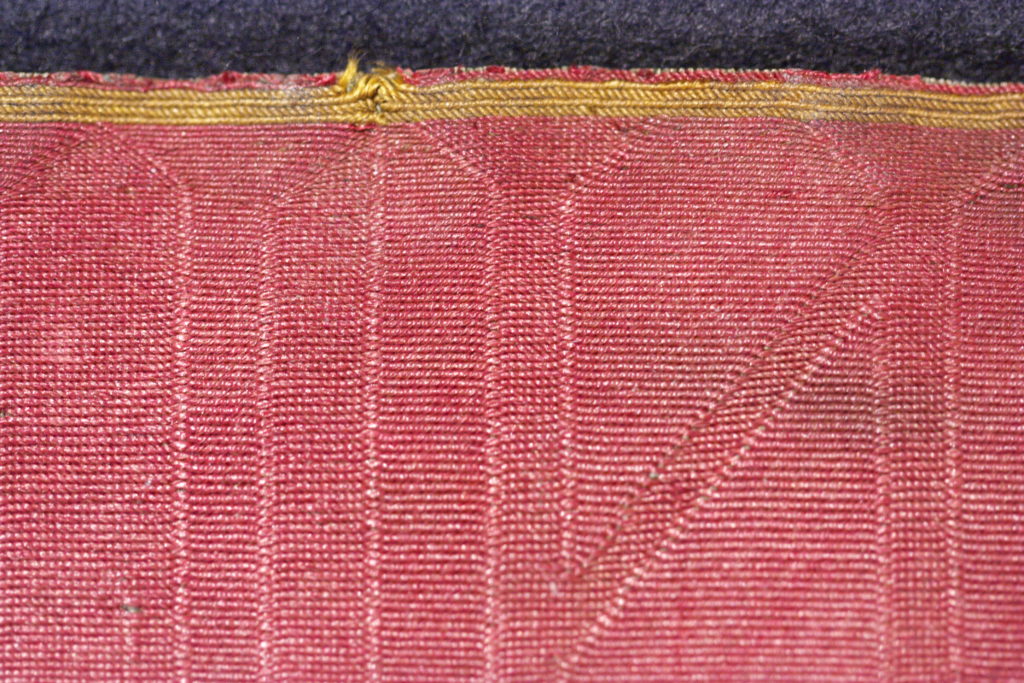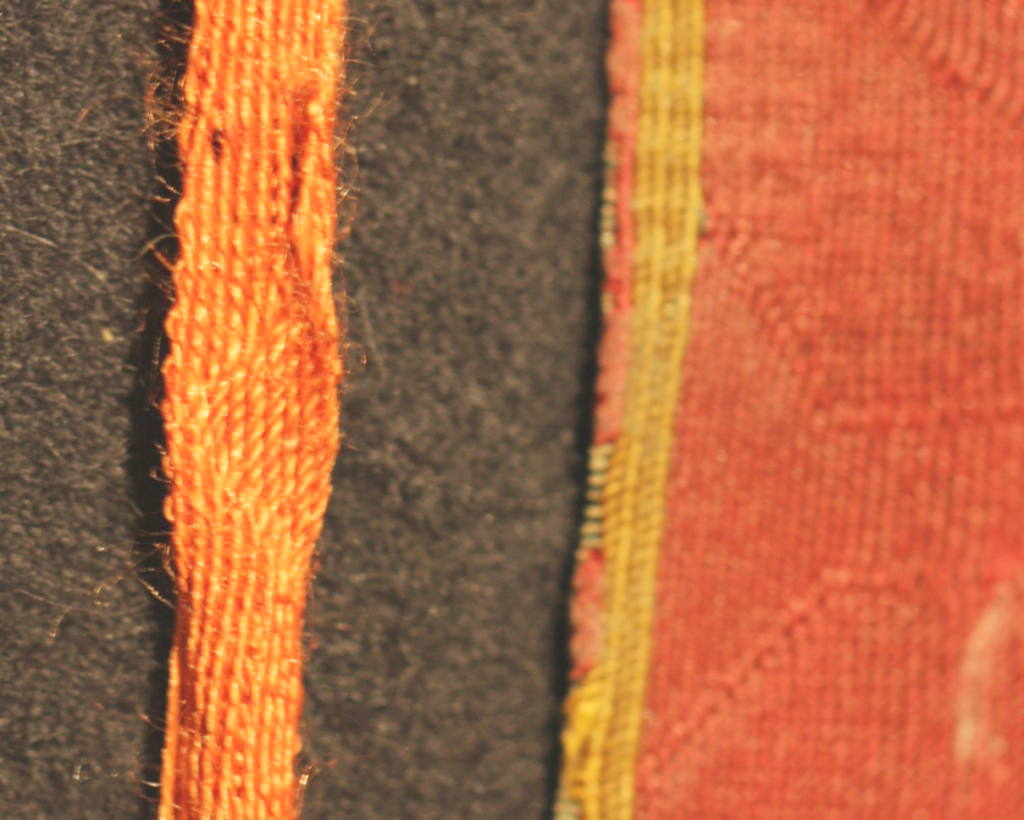As you know from yesterday's post, I spent Monday on a museum visit. Monday.
In case you're not familiar with German museums: They usually are all closed on Mondays, and there are very, very few exceptions to that rule. That means when you're in there on that day, it is either a special occasion (such as a public holiday, or a special event in the museum) or you have an appointment for something that happens best when there is no public around.
In my case, I had the wonderful opportunity to meet with two fellow textile people and see a few early medieval tablet weaves that are in the exhibition of the
Diözesanmuseum St. Afra: The Witgarius-Belt and the Albecunde-Belt. The latter also has a piece of the so-called Mary's Belt attached to it. (Unfortunately, there are almost no pictures of these belts on the internet - you can see a
tiny one of Witgarius here, and a
tiny one of Albecunde's belt (usually called Ailbecunde's belt) here.
All three are tablet-woven, and all of them are done in different variations of the technique: The Albecunde-Belt is woven all in one colour, with letters made by turn direction changes to form a subtle pattern that will be visible in certain angles and almost invisible in others. The threads are very, very fine, and the weave is incredibly dense. The start of the inscription, which also gives the belt its name, is "N NOMINE DOMINI ALBECUND" ... and while the first missing letter clearly has to be an I, I'm not quite sure about how it all goes on - it looks like a letter Q to me after the D, followed by an E, which is sort of weird. Anyways, the sure weirdness is that there is definitely no I in the name Albecund... - but there is a swap of the tablet turn direction between the A and the L, which might have led to the interpretation of a letter I. That was a first very interesting thing; the other, for me, was the density of the weave, which results in very pleasant angles of the letter serifs. You might know the syndrome of stretched-out, elongated patterns in tablet weaving? Well, this has clearly not happened here. It has not happened in a way that has deeply, thoroughly impressed me, and I now am convinced that I have to work on my weft-pressing technique, as there's obviously room for improvement.
The Witgarius-Belt has a similar ground weave - wine-red silk, with edge tablets in yellowish silk and red silk - and a similar density, but is brocaded. The gold thread brocading does, again, form letters; they show up in red on gold background on one side and in gold on red background on the other side.
The third of the pieces is only preserved as two small fragments, and one of them is on the back of the Albecunde-Belt, and thus not really visible. The larger fragment, though, can be seen on the belt front; it shows animals woven in 3/1 broken twill technique, alternatingly white on a background of coloured stripes and coloured on a white background. That was, of course, very interesting for me as well, and I hope to weave one or two of the animals in the near-ish future. My count comes to 41 tablets for the pattern zone, which fits in nicely for my play-band with the 42 tablets... and one of the motifs is a rather nice-looking duck-like animal. I haven't done a duck yet, so...
It was amazing to see these things close up (the case was opened for us, so we could take a closer look). Especially the Albecunde-Belt was a delight to look at. The technique itself, in which this is woven, is really simple - but the fineness of the threads, the evenness of the weave, and especially how densely the wefts are packed in reveals the true mastery of the weaver. It seems like the ultimate impressive understatement status symbol, something simple brought to utter perfection.
As you can see, my brain is still rather full of the impressions. Also, I have a good number of photographs, and quite a few things to try out once I get to string up my tablet weaves again, and altogether I'm very, very happy.
Museum Mondays? They are wonderful. Won.der.ful.







